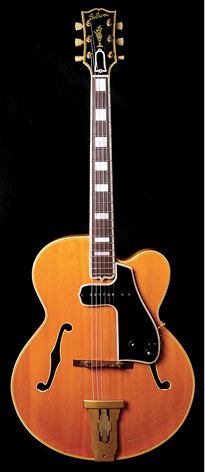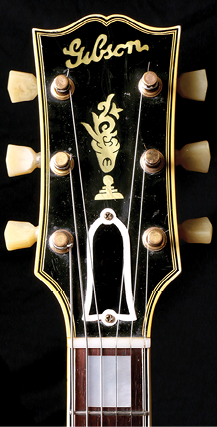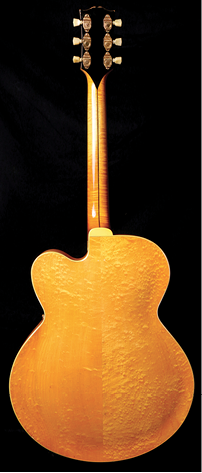2
The late sixties was a precarious time if you were a young man not in college or without a medical deferment that would keep you out of the Vietnam War. Like many of my generation, I didn’t support the war and had no intention of becoming a large target, which I would have been!
I was making a solid living playing music, but I could see I’d be an easy target if I wasn’t able to keep my grades up at the University of Miami and was drafted. I first went in with a major in accounting and a minor in music. After doing long and tedious accounting problems without a calculator, I realized this was never going to work, so I changed my major to filmmaking. I was looking for something a little more interesting and a lot easier.
I was burning the candle at both ends. It was not easy focusing on schoolwork, after driving to Fort Lauderdale every night, seventy miles each way, playing gigs late, then trying to get up to get to morning classes. My heart just wasn’t into college—especially all those complicated formulas you had to learn when I was studying accounting. They bored me. However, the problem was, if I flunked out, it would remove another barrier between the draft board and me.
I shared my fears with my buddy Bobby Kosser, who later became a comedian. He told me I’d better start building up my case by establishing some kind of medical history, if and when I got called up.
I immediately started seeing a psychiatrist, Dr. Steven Harris (no relation), and Bobby would tell me exactly what to say to the shrink before each appointment. If the doctor asked me to draw a picture of my father, I was supposed to draw him with gigantic hands, which meant that he used to beat me. No windows in my house meant some other traumatic event, which escapes me all these years later. I told Dr. Harris that I had recurring acid flashbacks, and he prescribed Thorazine for me, which I never took. Everything I said must have been in his school “textbook,” and he ate it up. I must have been one of his most classic cases. I always loved to see his reactions when I answered his questions.
A lottery was instituted in the draft and I received a number of 280 out of 365. I thought this was enough to keep me from doing military service. Two weeks later, I received a notice to report for my physical, and I was informed to bring my toothbrush only! Needless to say, this scared the crap out of me.
I had to put Bobby’s full plan into action. I didn’t shave or shower for a week. I stank, and I looked like an absolute maniac. I pulled out my “crazy” file from the doctor and went down to the draft board. There were about ten guys that I knew from school sitting there, all in various states of crazy. They were all pulling a similar hustle. It was hard not to break up seeing all the wacko roles these guys were playing, poorly. I was trying to keep a straight face, when my friend Kenny Gruber opened the door and screamed out at the top of his lungs, “Oh, my stomach!” I recognized his voice and almost broke up laughing. This surely would have blown my cover.
There was a fifteen-step process that everyone had to go through, and I took my time on number one. In fact, it took me about an hour just to write my name. But that wasn’t all I had to do. There were about four or five black dudes around me at about step number five. I forced myself to cry in front of all of them, and they were just hooting and laughing at me, but I didn’t care—I was on a mission of my own, to save my ass! It was the acting performance of my life! The draft board took me from step five to step fifteen and sent me on my way, with a 1-Y classification. This meant I was declared unfit for military service. Even in a nuclear war, forget about this guy. He’s nuts! The draft board alone at this point and time, with all the crazy things people were doing, could make quite a funny movie: Draft Board ’69.
•••
Being free of having to go to Vietnam, school started to fall by the wayside. I focused on my music, and to some extent, the lifestyle that came with it.
Getting ahold of that Fender Jazz Bass really peaked my interest in old instruments. Remember, there was virtually no information available on this huge world of vintage guitars, so I used every resource I could. There was this old guitar repairman named John Black, who was about eighty years old and the only guy in town that I could get information from. I used to drag Marlene down to his house in Hialeah and grill him for hours. He would point out to me the nuances of old guitars—the woods used on bodies, as well as fingerboards, the differences between pickups. He even used mayonnaise to polish his guitars. He would pull out some old guitar from his back room and say, “This guitar was used by the Gold Dust Twins in 1928 on a radio show!” What a character.
Pretty soon, it got around to all the musicians in town that I was getting good axes, and I became the go-to source for many of them. However, if I found something really special, I saved it for myself. I knew that the really clean ones wouldn’t just come along every day. That turned out to be the smartest thing I ever did.
I would scour the classified ads every morning. One day there was an ad that read something like “Stove, couch, refrigerator, guitar . . . ” I called up and got this elderly woman on the phone. I asked her about the guitar, and she said it was a Gibson.
“What else do you know about it?” I said.
“Well, I can see it’s got four, no six strings on it. My husband and I are leaving town, and he instructed me to get rid of all this stuff. The price is $25.”
“Tell you what,” I said. “I’ll give you $20 for it, sight unseen.”



Gibson 1949 L-5. (Photos by Jen Angkahan)
So I drove over there as quickly as possible, and when she opened the door, I saw all this junk lying around. But off to the side, leaning up against the wall was this beautiful brown case. I hardly knew anything about guitars, but I could tell that this case was pretty special, and I couldn’t believe that my $20 guitar was in it. I expected to see some beat up piece of junk.
We laid the case on the floor, she opened it up, and inside it was this beautiful, blond Gibson L-5 Premiere. Looking back, this could have been the beginning of my obsession with blond archtops. The L-5 premiere represented the state of Gibson’s art in 1939. It was a fully carved-top guitar with the best appointments, and the Premiere meant that it was a Cutaway, which was a major innovation at that time. Of course I knew nothing about that, but I could see that this was a spectacular instrument. I paid her the $20 and immediately took it to my buddy in Miami, Ed Oleck, who was already buying and selling old guitars. He told me what the Premiere designation meant on that old white label inside the guitar, it meant the first Cutaways. He also wanted to buy it from me, but I was not about to sell it.
In the meantime, Katmandu was firing on all cylinders. We continued having a steady gig at a nightclub called The Flying Machine in Fort Lauderdale, whose entrance was an old seaplane, hence its name. I was there a lot. I made friends with all the waitresses. Mind you, I was living with my soon-to-be wife, Marlene, and I was trying to make ends meet. I hustled things in another fashion.
I always had the gift for turning a buck. If I saw opportunity, I took it. And in Miami, in that era, there were quite a few opportunities in the illegal marijuana trade. Through my Cuban buddies, I would buy one pound of pot, then break it up into sixteen “lids,” and give it to the waitresses in the club to sell. It was an easy way to make money, and I did quite well with it. Being a good capitalist, I reinvested my profits in more pot.
One night, I was driving home from The Flying Machine in the pouring rain at three in the morning, and I crashed my car into a telephone pole on the 836 expressway overpass. In my trunk I had three ounces of pot and about ten LSD trips. I immediately ran to my trunk and threw the dope over the side of the expressway on a greenbelt. I was sleep deprived and pretty messed up. A Good Samaritan spotted me, and my messed-up car, and helped me get it back on the road. It was barely running, but I hoped it would get me home. The next day, Marlene and I went back to The Flying Machine in her car with my beautiful L-5 Premier in the trunk. I wanted to show the guitar to my bandmates and friends at the club. I figured I would also stop along the expressway and retrieve my dope. I spotted where my car had crashed, looked over to the side of the greenbelt, and sure enough there was my dope. I grabbed it and put it in my trunk, along with the Gibson L-5.
On the way back home to Perrine that night, we ran into some traffic, and all I can remember was a car screeching behind me. Next thing I knew— bang!—I was rear-ended! Once again, I ran to the trunk and threw the dope off to the side of the expressway. By the time the police came, I had opened the case to my L-5 and noticed a big crack in the guitar. I was in two accidents within twenty-four hours. This made me never want to get into a car again, but of course I had no choice.
Marlene and I went to the emergency room because we experienced whiplash. After being treated, we went back to my apartment. My bandmates met me there, and I ran down the whole story to them, including my L-5 getting damaged and me throwing my dope off to the side of the expressway once again. Of course my bandmates encouraged me to go back for the dope once again. We got in the car and went back to the spot of the accident, stopped on the expressway, and I jumped out to once again retrieve my dope. A police car spotted us and made me pull over. He said, “What are you crazy? Why are you stopping on the expressway?” Fortunately, I was thinking quickly, and said, “I thought I heard something fall off my car, possibly my bumper.” The cop actually believed my story and told me to get back on the expressway and go home. It was a very close call. I guess that contraband was never meant to be mine.
We reported the accident to Marlene’s insurance company, and it turned out that my friend Ed Oleck became an advisor to the insurance adjuster. He told them that they better give me $1,200 because the guitar was irreplaceable. That may not sound like a lot, but in 1969 that was some serious money. And I used it to invest in my new business buying and selling guitars.
•••
Meanwhile, I had reinvested a lot of my profits from selling pot into more stash, and I had accumulated about twenty pounds, which I had stashed in my luminous ceiling in my kitchen. One of the Cuban guys that I was buying my pot from told me that we had to check out this new movie called Joe, with Peter Boyle. (If you like the actress Susan Sarandon, I suggest you see this film, immediately.) So, one night, I took Marlene out on a date to see the movie, and when we returned, the first thing I saw was that the lock on the door had been broken. Sure enough, all my pot was gone, obviously an inside job orchestrated by my Cuban “friend.”
I was completely wiped out. I couldn’t even call the police and tell them I’d been robbed. Understandably, this was the end of my career as a pot dealer. It was quite a harsh learning experience, but at least I realized that business can be a lot less volatile if it’s conducted on the right side of the law. I did not want to be a big time dealer or do business with those unsavory characters. I was just young and dumb. But right then and there, I decided I’d only deal in legitimate products in the future, which, of course, eventually became guitars. I often think if the police had nailed me for that amount of dope in 1969, I’d probably still be serving time today, so in a sense it was really lucky that I got ripped off and not busted!
Music was still my overriding passion. All other pursuits took a backseat to it. Katmandu was getting really popular, and we even opened up for the Allman Brothers on a field in front of the Miami Beach auditorium in 1970. Whenever I tell people that, the first thing they want to know is if Duane Allman blew my mind at that gig. Honestly, he didn’t have that much impact on me that day. We all knew they were a good band. But probably as a result of the fact that it was outdoors, and that they were using a primitive PA system, it just didn’t seem that heavy.
As a result of that gig, we got a record deal. The label was called Mainstream Records, and their big seller was Big Brother and the Holding Company with Janis Joplin. So we figured we’d finally made it. The owner, Bob Shad, was a pretty well known jazz producer, who had recorded Charlie Parker and Clifford Brown and was now trying to jump on the rock-and-roll bandwagon.
We went into the legendary Criteria Studios to record at the same time that Derek and the Dominoes were recording the Layla album. With one big difference—Clapton and crew recorded that album over a period of months, whereas we recorded ours in twenty-four hours and, unfortunately, it sounded like it! We were really too green to be churning out a record at that pace, but Shad was desperate for material. The session was shit.
To make matters worse, we found out shortly after signing that Big Brother was suing the label, because they were getting screwed on their royalties. Needless to say, we didn’t get much promotion and the label was already in trouble.
But it all wasn’t a complete wash. When we were recording at Criteria, Little Richard and his brother, Peyton Penniman, heard us and took an interest in our future. Richard told me that I was one of the “best white singers” he’d ever heard and, of course, I ate that up.
Though Richard was about a decade removed from the peak of his career, he was still a bankable and working act. He told us that we’d never make it in Miami and that we’d have to move to LA, and he could set us up with Mo Ostin at Warner Brothers records.
That was all the encouragement we needed. We packed up everything and prepared to drive across country. I did leave some stuff in Miami, in case I’d want to move back. But, as it happens with so many things in life, I never did go back to Miami to live.
I, like many, wanted to take my shot at the music business.